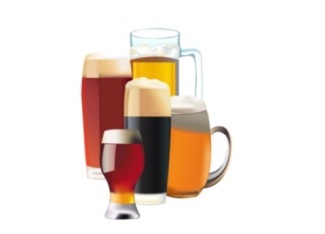Use of an Electronic Tongue for the Analysis of Beer

The presented work is part of the research carried out in the laboratories of the Sensors & Biosensors group, from the UAB on electronic tongues. These are the combination of arrays of chemical sensors with advanced tools for the processing of information coming from the sensors. In this way you can mimic both senses of smell when gas sensors are used, or of taste, when sensors are used for liquids. In essence, the simile which is being done is to provide robots (or automatic systems) analogues of human chemical senses of perception.
Figure: Diagram of the operation of electronic tongues.
As for a more detailed description of the work, first it was chosen to perform a qualitative analysis application and identification of different varieties of beer, as an illustration of the possibilities of this type of system. The sensors used which were 21 in total , were of the potentiometric type , each formed by an ion -selective polymeric membrane , which is formulated with the components necessary to achieve response , in our case selective to different anions , different cations , and also certain sensors with generic response to all anions and cations.
Finally, the computer processing tools used were dependent on the type of information sought . If what is sought is to identify the type of beer, including Black , Lager , Double malt , Pilsen or Alsatian , each class combining different types of elaboration lots, the analysis is performed using linear discriminant analysis. This procedure seeks dividing lines between classes when a multivariate representation is made according to the set of responses obtained from the sensors. In identifying these classes, it could also be also verified the responses of beers with low-alcohol content, and other variants as Shandy or American light beer, obtaining for the different cases a high percentage of identification (81.9 %) , of course with the admonition of performing a cross validation between the training and testing samples.
A final example of use of electronic tongue, now in quantitative application, allowed us to estimate the alcohol content, which was obtained from a model based on an artificial neural network trained with declared label values in each sample. Neural networks are powerful tools for modelling, inspired by functioning of the brain. The correlation with an external validation set of beers (25% of samples unused in the training stage), was 0.999, while the correspondence with the expected values was 98.9 ± 2.4%. In this last example, the system was able to predict a component (alcohol) for which no specific sensor was used; the component sought was derived from the available supplementary information (this principle has been named software sensor).
References
Cetó, Xavier; Gutiérrez-Capitán, Manuel; Calvo, Daniel; del Valle, Manel. Beer classification by means of a potentiometric electronic tongue. Food Chemistry 141: 2533–2540. 2013.


